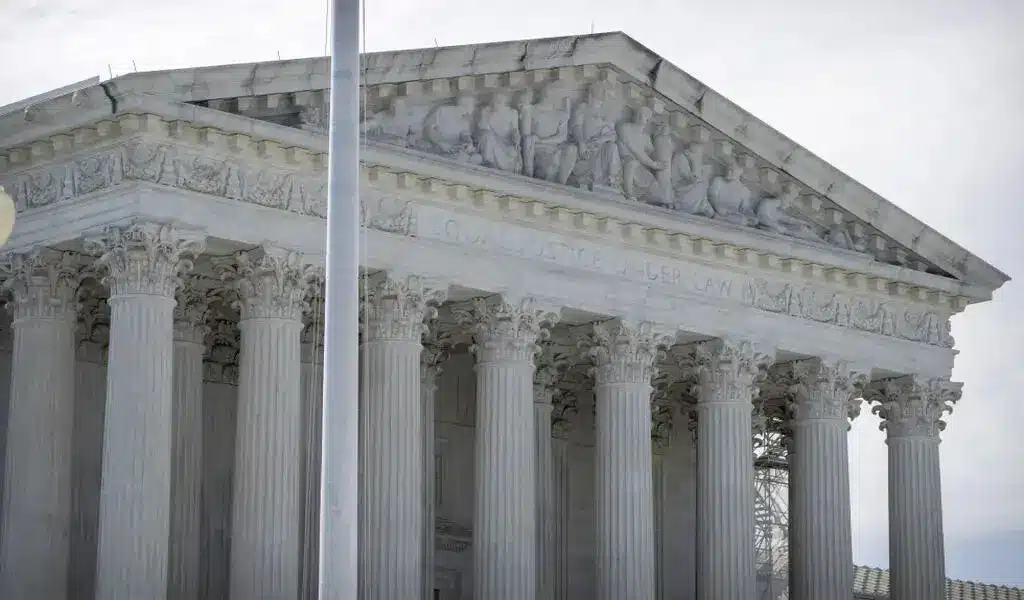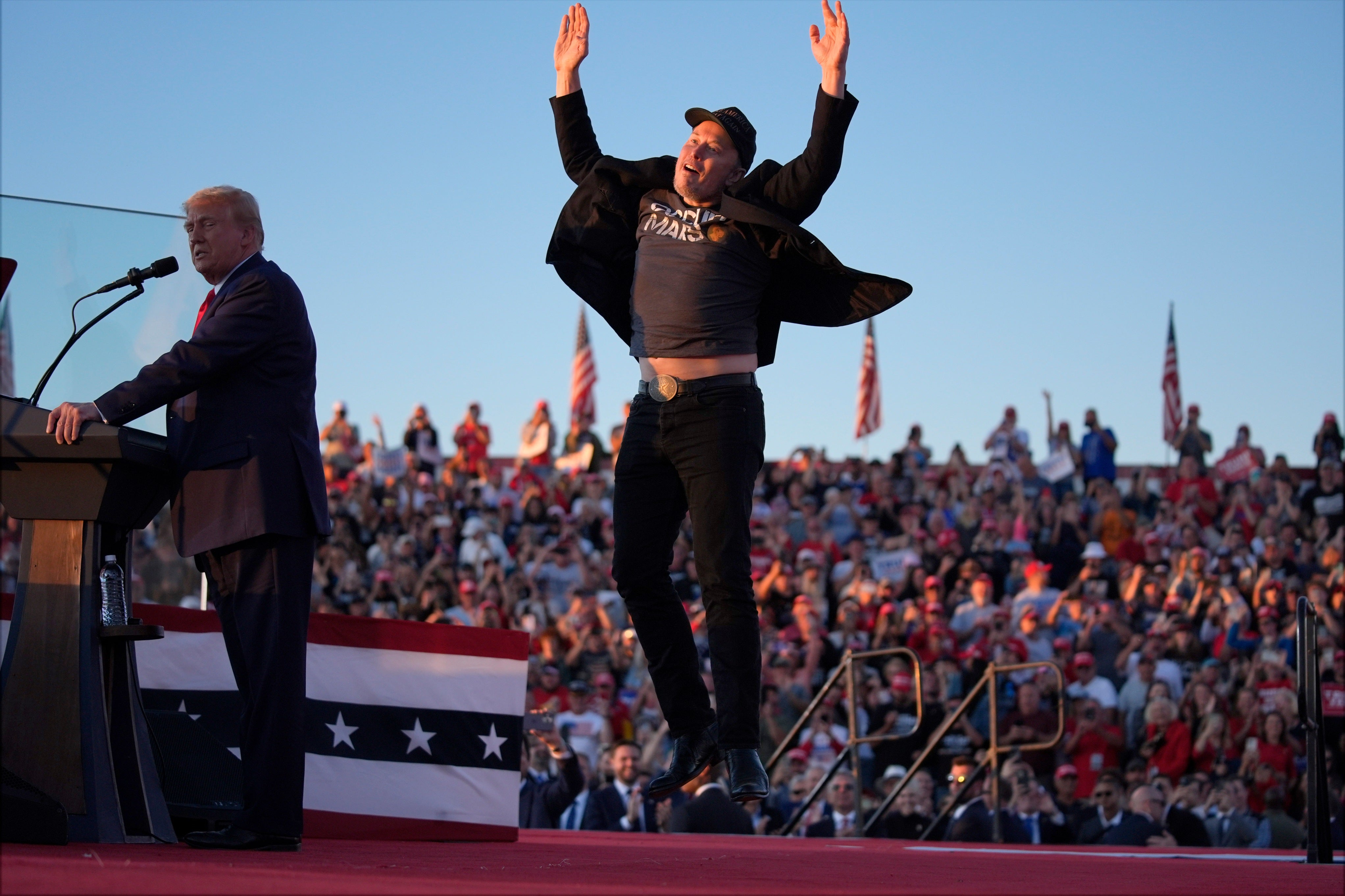News
The Ever-Changing Timetable of COVID-19: Will It Ever Settle into a Seasonal Virus?

(CTN News) – Although the pandemic is no longer a public health emergency, many of my neighbours, acquaintances, and family members continue to contract COVID-19.
Just last summer, a relative contracted COVID-19 while camping. One of my neighbours was ill. Another person had no symptoms but kept his distance as a bright pink line emerged on his test strip every morning.
He shouted updates across the street as we walked our dogs, “The queue was a little fainter today.” “It’s gone.” Finally, “It’s been two days since the queue disappeared.” We and the dogs were overjoyed at the reunion.
In the fall and winter, the reports poured in again: coworkers infected with the coronavirus; the sick neighbour’s family contracted COVID-19 in the fall, long after he had recovered; a friend became ill after visiting a relative and missed Christmas with her parents; and another friend’s cousins tested positive shortly after spending the holidays together.
The experiences of those in my group reflect the peaks and troughs of contagion experienced throughout the United States and other temperate zones worldwide. All of this made me question if SARS-CoV-2, the coronavirus that causes COVID-19, will ever settle down as a virus that only hits during the cold and flu season.
Having a consistent season would make vaccination timing and formulation easier. It may also persuade people that it is prudent to take measures, such as wearing a mask at particular times of the year.
Some new studies indicate that COVID-19 may be a year-round concern, driven more by human behaviour and immunity levels than by weather patterns.
Cold and dry weather promotes the spread of common respiratory viruses (SN: 1/11/23). SARS-CoV-2, like the flu viruses, is more stable at low temperatures and humidity levels.
However, scientists were unsure whether the virus’s stability in well-controlled lab conditions translated to better spread in the real world at specific times of the year, according to Vincent Munster, a virologist at the Rocky Mountain Laboratories in Hamilton, Mont., which is part of the National Institutes of Health in the United States.
Munster and colleagues conducted trials using hamsters as stand-ins for humans. The researchers focused on airborne transmission, the predominant mechanism of COVID-19 distribution, rather than alternative, less likely modes of spread, such as big droplets or contaminated surfaces.
So, the scientists infected one hamster and placed it 90 centimetres apart from a cage containing an uninfected hamster. At that distance, only airborne viruses could reach the uninfected hamster.
The researchers evaluated a standard climate-controlled room temperature (22° Celsius, or around 72° Fahrenheit) with a comfortable relative humidity of 45%.

Other hamsters were tested in cooler temperatures of 10°C, which mimicked autumn and winter in various regions of the world. A third group of animals received the tropical therapy at 27 degrees Celsius and 65 per cent relative humidity.
According to a study published on January 9 in npj Viruses, environmental circumstances did not impact airborne coronavirus transmission. The virus was transmitted across hamsters at equal rates in all environments examined.
“Most of the time, the environmental impact on these viruses is relatively limited because they only stay in the air for a relatively short time,” Munster said. He’s talking seconds to minutes, not hours or days.
As Munster and colleagues have already demonstrated, aerosols can remain in the air for hours, but infection likely occurs much faster, he says.
Typically, an infected person exhales an infectious virus, which someone adjacent inhales. There isn’t enough transit time for environmental factors to impact viral propagation significantly in those circumstances.
According to Munster, the researchers’ main issue was, “Does that mean these viruses don’t have the propensity to become seasonal?” He believes the coronavirus will eventually have a season, but the calendar will not determine it. Instead, he thinks COVID season will be determined by people’s virus immunity (from vaccination, prior infections, or both) and human behaviour.
Another recent study examines the human behaviour component. Researchers at the University of Oxford examined data from a cell phone app used to inform people when they were in contact with someone who tested positive for COVID-19.
The team evaluated over 7 million notices issued between April 2021 and February 2022. The researchers sought to see if they could reliably predict if someone would contract COVID-19 by observing how close people were to infected persons and how long the sick and healthy were together.
According to epidemiologist Christophe Fraser, people frequently believe that “stranger danger” is the greatest risk of becoming infected, although the evidence shows otherwise.
The software was programmed to alert users if they were less than two metres away from an infected individual for 15 minutes. “The risk of transmission was really quite low at that point,” he explained.
Fraser and colleagues reported in Nature on December 20 that the transmission probability increased by 1.1% every hour of exposure and continued to rise over several days. Households represented only 6% of connections but 40% of transmissions.
Brief, casual interactions with strangers, such as at the grocery store, resulted in many contacts but few infections. Instead, the individual who poses the most danger is “somebody you’ve spent a lot of time with: you could have dinner with them, go to the cinema with them, live at home with them, or work next to them in an office,” he says.
This is because infected people constantly exhale the virus, and the longer you are exposed and the closer you are to the source, the more likely you are to become infected.
According to Fraser, other respiratory viruses have seasons that are influenced not only by weather but also by human behaviour. Flu and respiratory syncytial virus (RSV) outbreaks typically occur when students return to school following summer or winter breaks (SN: 8/12/21). Perhaps COVID-19 will follow a similar trajectory, but it could take decades, he says.

Human behaviour can also suppress seasonal viruses, at least for a while. In 2020 and 2021, COVID-19 prevention methods such as social separation and mask-wearing significantly reduced influenza and RSV infections (SN: 2/2/21). However, once the limits were eased, the viruses recovered.
Researchers believe that some of the comeback of seasonal viruses is due to a loss of collective immunity against the viruses, particularly among small children who lack immunity and the elderly, whose immune systems are weakened. Immunity also deteriorates the further you are from a booster shot or virus.
Luca Ferretti, Fraser’s Oxford colleague, believes that changes in human immunity may be the primary driver of COVID-19 seasonality in the future. But that is not what has transpired thus far.
Early in the epidemic, no one was immune to the virus, which allowed it to infect practically everyone. When vaccinations became available and many people developed protection from earlier illnesses or shots, the immune system was able to block or reduce the spread of the virus.
If the coronavirus evolved slowly, like most respiratory viruses do, COVID-19 could have already become a seasonal sickness. However, the coronavirus continues to evolve rapidly, frequently in ways that allow it to bypass immune defences and infect even those who have previously been immune.
For example, the JN.1 variation first appeared in US Centres for Disease Control and Prevention records in October. As of January 20, it accounted for about 86% of cases in the United States. Over 30,000 people were hospitalised as a result of the infection between January 7 and 13.
So far, the largest coronavirus epidemics have occurred when novel variations, such as delta and omicron, that allow the virus to evade antibodies emerged. Nobody knows if the virus still has such spectacular escape moves in its bag of tricks.
The Elusive Goal: Predicting COVID-19 Seasons
In addition to shielding us from COVID-19, human immunity has altered when people are most infectious. Early in the pandemic, persons produced the most virus and were most infectious within the first few days of infection, sometimes before symptoms appeared.
Researchers reported in Clinical Infectious Diseases on September 28 that vaccination protection and past COVID-19 cases have delayed the peak of viral production until four days after symptoms begin.
According to Nira Pollock, a clinical diagnostics expert at Boston Children’s Hospital, the difference is that the immune system fights the virus early in the infection and produces symptoms before viral replication begins.
That is a nice thing. However, it may inadvertently contribute to more infections since it affects when patients receive a positive response from home tests. A positive line on a home test means creating enough virus for the test to detect.
So, with a delay in peak viral generation, you may receive a negative test result while having COVID-19 and being able to transmit it to others. This is why repeat testing is required if you exhibit symptoms or have been exposed to someone who does.
“If you test negative on day one, you are not done,” Pollock explains. “If you continue to be symptomatic, you should repeat your test because your peak viral load may occur on the fourth, third, or fifth day of symptoms.The FDA recommends “repeat testing”. It is on the package.”
It would be wonderful to mark the COVID-19 season on a calendar. At least then, we’d know whether to wear masks with our hats, gloves, or beachwear. There would be less guessing involved in timing immunisations.
For now, however, the coronavirus operates on its constantly changing schedule. We may be able to determine whether it eventually settles as a seasonal virus. The power of our collective immune systems and our willingness to take care to prevent disease from spreading to others may finally wrestle it into seasonal submission.

News
Google’s Search Dominance Is Unwinding, But Still Accounting 48% Search Revenue

Google is so closely associated with its key product that its name is a verb that signifies “search.” However, Google’s dominance in that sector is dwindling.
According to eMarketer, Google will lose control of the US search industry for the first time in decades next year.
Google will remain the dominant search player, accounting for 48% of American search advertising revenue. And, remarkably, Google is still increasing its sales in the field, despite being the dominating player in search since the early days of the George W. Bush administration. However, Amazon is growing at a quicker rate.
Google’s Search Dominance Is Unwinding
Amazon will hold over a quarter of US search ad dollars next year, rising to 27% by 2026, while Google will fall even more, according to eMarketer.
The Wall Street Journal was first to report on the forecast.
Lest you think you’ll have to switch to Bing or Yahoo, this isn’t the end of Google or anything really near.
Google is the fourth-most valued public firm in the world. Its market worth is $2.1 trillion, trailing just Apple, Microsoft, and the AI chip darling Nvidia. It also maintains its dominance in other industries, such as display advertisements, where it dominates alongside Facebook’s parent firm Meta, and video ads on YouTube.
To put those “other” firms in context, each is worth more than Delta Air Lines’ total market value. So, yeah, Google is not going anywhere.
Nonetheless, Google faces numerous dangers to its operations, particularly from antitrust regulators.
On Monday, a federal judge in San Francisco ruled that Google must open up its Google Play Store to competitors, dealing a significant blow to the firm in its long-running battle with Fortnite creator Epic Games. Google announced that it would appeal the verdict.
In August, a federal judge ruled that Google has an illegal monopoly on search. That verdict could lead to the dissolution of the company’s search operation. Another antitrust lawsuit filed last month accuses Google of abusing its dominance in the online advertising business.
Meanwhile, European regulators have compelled Google to follow tough new standards, which have resulted in multiple $1 billion-plus fines.

Pixa Bay
Google’s Search Dominance Is Unwinding
On top of that, the marketplace is becoming more difficult on its own.
TikTok, the fastest-growing social network, is expanding into the search market. And Amazon has accomplished something few other digital titans have done to date: it has established a habit.
When you want to buy anything, you usually go to Amazon, not Google. Amazon then buys adverts to push companies’ products to the top of your search results, increasing sales and earning Amazon a greater portion of the revenue. According to eMarketer, it is expected to generate $27.8 billion in search revenue in the United States next year, trailing only Google’s $62.9 billion total.
And then there’s AI, the technology that (supposedly) will change everything.
Why search in stilted language for “kendall jenner why bad bunny breakup” or “police moving violation driver rights no stop sign” when you can just ask OpenAI’s ChatGPT, “What’s going on with Kendall Jenner and Bad Bunny?” in “I need help fighting a moving violation involving a stop sign that wasn’t visible.” Google is working on exactly this technology with its Gemini product, but its success is far from guaranteed, especially with Apple collaborating with OpenAI and other businesses rapidly joining the market.
A Google spokeswoman referred to a blog post from last week in which the company unveiled ads in its AI overviews (the AI-generated text that appears at the top of search results). It’s Google’s way of expressing its ability to profit on a changing marketplace while retaining its business, even as its consumers steadily transition to ask-and-answer AI and away from search.

Google has long used a single catchphrase to defend itself against opponents who claim it is a monopoly abusing its power: competition is only a click away. Until recently, that seemed comically obtuse. Really? We are going to switch to Bing? Or Duck Duck Go? Give me a break.
But today, it feels more like reality.
Google is in no danger of disappearing. However, every highly dominating company faces some type of reckoning over time. GE, a Dow mainstay for more than a century, was broken up last year and is now a shell of its previous dominance. Sears declared bankruptcy in 2022 and is virtually out of business. US Steel, long the foundation of American manufacturing, is attempting to sell itself to a Japanese corporation.
SOURCE | CNN
News
2024 | Supreme Court Won’t Hear Appeal From Elon Musk’s X Platform Over Warrant In Trump Case

Washington — Trump Media, The Supreme Court announced Monday that it will not hear an appeal from social media platform X about a search warrant acquired by prosecutors in the election meddling case against former President Donald Trump.
The justices did not explain their rationale, and there were no recorded dissents.
The firm, which was known as Twitter before being purchased by billionaire Elon Musk, claims a nondisclosure order that prevented it from informing Trump about the warrant obtained by special counsel Jack Smith’s team violated its First Amendment rights.
The business also claims Trump should have had an opportunity to exercise executive privilege. If not reined in, the government may employ similar tactics to intercept additional privileged communications, their lawyers contended.
Supreme Court Won’t Hear Appeal From Elon Musk’s X Platform Over Warrant In Trump Case
Two neutral electronic privacy groups also joined in, urging the high court to hear the case on First Amendment grounds.
Prosecutors, however, claim that the corporation never shown that Trump utilized the account for official purposes, therefore executive privilege is not a problem. A lower court also determined that informing Trump could have compromised the current probe.

Trump utilized his Twitter account in the weeks preceding up to his supporters’ attack on the Capitol on January 6, 2021, to spread false assertions about the election, which prosecutors claim were intended to create doubt in the democratic process.
The indictment describes how Trump used his Twitter account to encourage his followers to travel to Washington on Jan. 6, pressuring Vice President Mike Pence to reject the certification, and falsely claiming that the Capitol crowd, which battered police officers and destroyed glass, was peaceful.
Supreme Court Won’t Hear Appeal From Elon Musk’s X Platform Over Warrant In Trump Case
That case is now moving forward following the Supreme Court’s verdict in July, which granted Trump full immunity from criminal prosecution as a former president.
The warrant arrived at Twitter amid quick changes implemented by Musk, who bought the company in 2022 and has since cut off most of its workforce, including those dedicated to combating disinformation and hate speech.
SOURCE | AP
News
The Supreme Court Turns Down Biden’s Government Appeal in a Texas Emergency Abortion Matter.

(VOR News) – A ruling that prohibits emergency abortions that contravene the Supreme Court law in the state of Texas, which has one of the most stringent abortion restrictions in the country, has been upheld by the Supreme Court of the United States. The United States Supreme Court upheld this decision.
The justices did not provide any specifics regarding the underlying reasons for their decision to uphold an order from a lower court that declared hospitals cannot be legally obligated to administer abortions if doing so would violate the law in the state of Texas.
Institutions are not required to perform abortions, as stipulated in the decree. The common populace did not investigate any opposing viewpoints. The decision was made just weeks before a presidential election that brought abortion to the forefront of the political agenda.
This decision follows the 2022 Supreme Court ruling that ended abortion nationwide.
In response to a request from the administration of Vice President Joe Biden to overturn the lower court’s decision, the justices expressed their disapproval.
The government contends that hospitals are obligated to perform abortions in compliance with federal legislation when the health or life of an expectant patient is in an exceedingly precarious condition.
This is the case in regions where the procedure is prohibited. The difficulty hospitals in Texas and other states are experiencing in determining whether or not routine care could be in violation of stringent state laws that prohibit abortion has resulted in an increase in the number of complaints concerning pregnant women who are experiencing medical distress being turned away from emergency rooms.
The administration cited the Supreme Court’s ruling in a case that bore a striking resemblance to the one that was presented to it in Idaho at the beginning of the year. The justices took a limited decision in that case to allow the continuation of emergency abortions without interruption while a lawsuit was still being heard.
In contrast, Texas has been a vocal proponent of the injunction’s continued enforcement. Texas has argued that its circumstances are distinct from those of Idaho, as the state does have an exemption for situations that pose a significant hazard to the health of an expectant patient.
According to the state, the discrepancy is the result of this exemption. The state of Idaho had a provision that safeguarded a woman’s life when the issue was first broached; however, it did not include protection for her health.
Certified medical practitioners are not obligated to wait until a woman’s life is in imminent peril before they are legally permitted to perform an abortion, as determined by the state supreme court.
The state of Texas highlighted this to the Supreme Court.
Nevertheless, medical professionals have criticized the Texas statute as being perilously ambiguous, and a medical board has declined to provide a list of all the disorders that are eligible for an exception. Furthermore, the statute has been criticized for its hazardous ambiguity.
For an extended period, termination of pregnancies has been a standard procedure in medical treatment for individuals who have been experiencing significant issues. It is implemented in this manner to prevent catastrophic outcomes, such as sepsis, organ failure, and other severe scenarios.
Nevertheless, medical professionals and hospitals in Texas and other states with strict abortion laws have noted that it is uncertain whether or not these terminations could be in violation of abortion prohibitions that include the possibility of a prison sentence. This is the case in regions where abortion prohibitions are exceedingly restrictive.
Following the Supreme Court’s decision to overturn Roe v. Wade, which resulted in restrictions on the rights of women to have abortions in several Republican-ruled states, the Texas case was revisited in 2022.
As per the orders that were disclosed by the administration of Vice President Joe Biden, hospitals are still required to provide abortions in cases that are classified as dire emergency.
As stipulated in a piece of health care legislation, the majority of hospitals are obligated to provide medical assistance to patients who are experiencing medical distress. This is in accordance with the law.
The state of Texas maintained that hospitals should not be obligated to provide abortions throughout the litigation, as doing so would violate the state’s constitutional prohibition on abortions. In its January judgment, the 5th United States Circuit Court of Appeals concurred with the state and acknowledged that the administration had exceeded its authority.
SOURCE: AP
SEE ALSO:
Could Last-Minute Surprises Derail Kamala Harris’ Campaign? “Nostradamus” Explains the US Poll.
-

 News4 years ago
News4 years agoLet’s Know About Ultra High Net Worth Individual
-
Entertainment2 years ago
Mabelle Prior: The Voice of Hope, Resilience, and Diversity Inspiring Generations
-
News11 years ago
Enviromental Groups Tell Mekong Leaders Lao Dam Evaluation Process Flawed
-

 Health4 years ago
Health4 years agoHow Much Ivermectin Should You Take?
-

 Tech3 years ago
Tech3 years agoTop Forex Brokers of 2023: Reviews and Analysis for Successful Trading
-

 Lifestyles3 years ago
Lifestyles3 years agoAries Soulmate Signs
-

 Entertainment3 years ago
Entertainment3 years agoWhat Should I Do If Disney Plus Keeps Logging Me Out of TV?
-

 Health3 years ago
Health3 years agoCan I Buy Ivermectin Without A Prescription in the USA?


